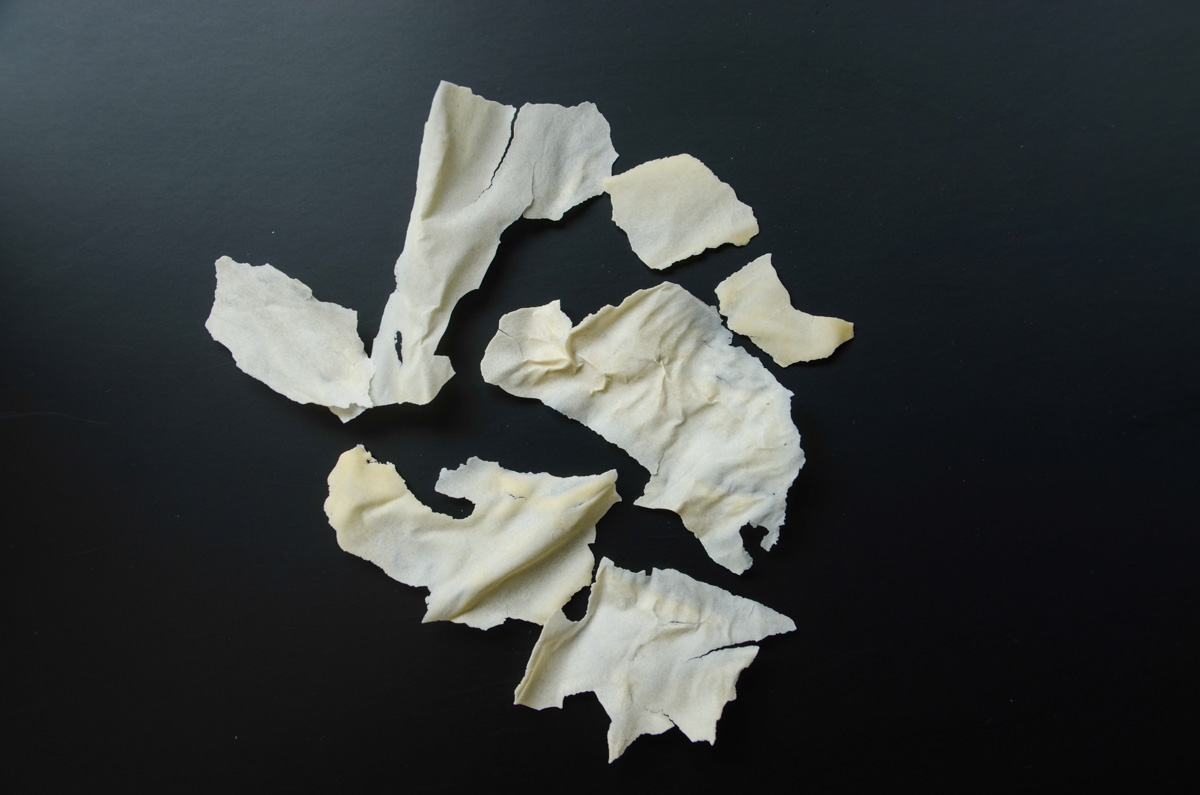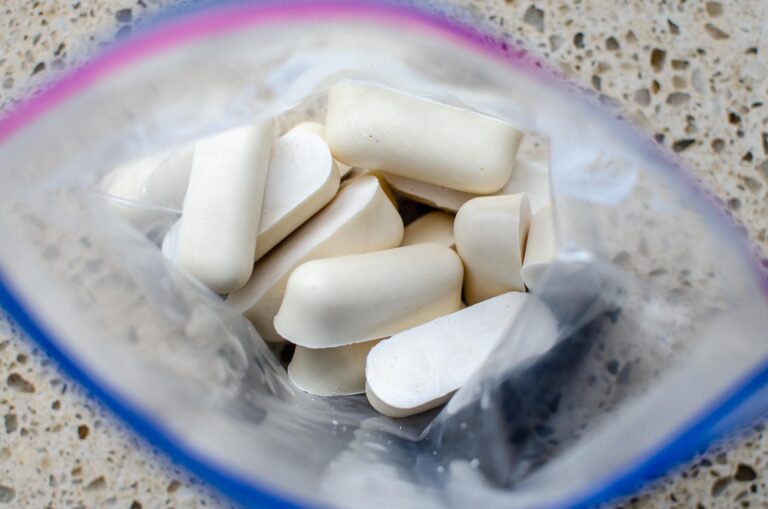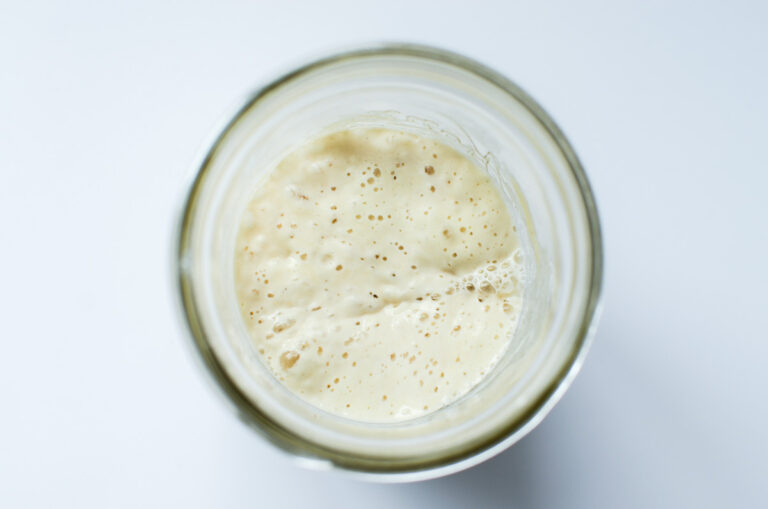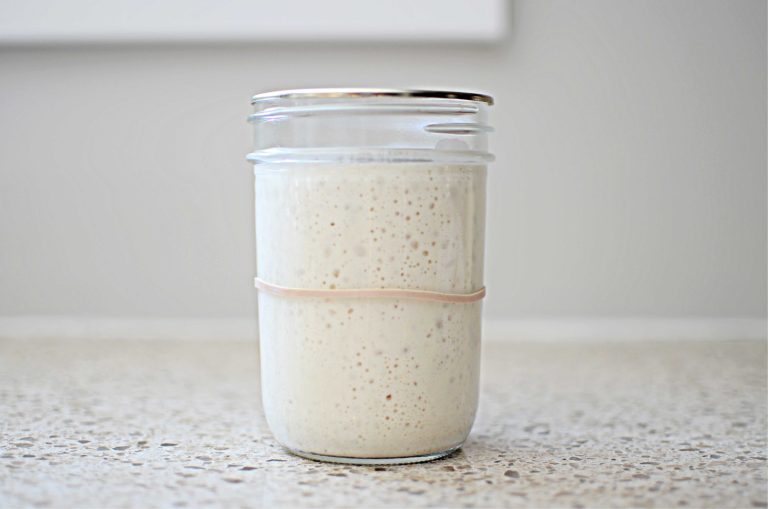Learn How To Dehydrate A Sourdough Starter For Storage
Learn how to dehydrate a sourdough starter with a few easy steps in this complete guide for long-term storage.
This post may contain affiliate links. As an Amazon Associate, I may receive a small commission, at no cost to you, if you make a purchase. Please read our disclosure policy.
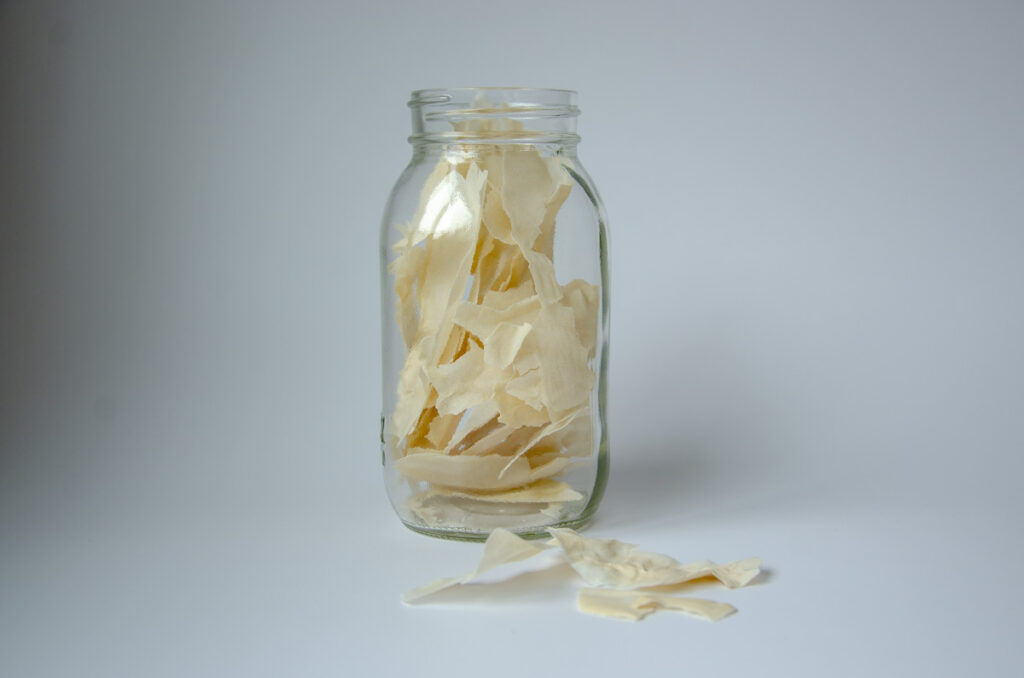
Using a sourdough starter to bake sourdough bread has been around long before commercial yeast was available. Even though we have many options for yeast these days, there’s been a resurgence of this old skill. If you’re new to baking with sourdough, learn how to make a sourdough starter from scratch and bake using it in an easy beginner artisan loaf.
At some point in one’s journey with sourdough, you may have wondered how to dry sourdough starter. Is it difficult? Do you need any special equipment?
Keep reading to learn how to dehydrate a starter. It is a simple process and a useful skill to have for anyone who enjoys keeping a sourdough starter.
Read More About Sourdough Basics
Why Dehydrate A Sourdough Starter?
- Backup – “Oh no, I killed my starter!” “There’s something funky growing on the starter!” Or “I accidentally washed the jar.” Whatever the reason, we’ve all experienced needing a backup starter at some point in our sourdough journey. And if you haven’t, then it’s coming. In reality, there are a myriad of scenarios that could leave you without a sourdough starter. Having dried starter chips on hand is like having an insurance policy that protects you from these types of moments. After all, not all starters are alike and its a good idea to have more of your starter. I just had a friend who takes breaks from baking sourdough comment that the starter I shared with her is the strongest yet! You bet I want plenty of this one on hand!
- Easy – Dehydrating a sourdough starter is easy to do and takes very little hands-on time.
- Little Equipment – There are many methods available to dehydrate a sourdough starter. The good news is that one of the options requires equipment you probably already have in your kithcen, making it a low risk endeavor.
- Sharable – A dehydrated starter is a great way to share your sourdough starter, especially if it needs to travel long distances.
- Seasonal – Let’s be honest, there are seasons when you feel like baking with sourdough more than others. Having some of your own sourdough starter in dried form allows you to take a break from the feeding process. It waits until you’re ready to pick it back up again.
How Does Dehydrating A Sourdough Starter Work?
Moisture is the enemy of long-term storage when it comes to dehydrating foods. By exposing the sourdough starter to air, whether at room temperature or at a slightly elevated temperature, over time the moisture in the sourdough starter evaporates.
The live wild yeast and bacteria in the active starter go into a dormant state, allowing the starter to be stored for long periods of time without needing to be continuously fed.
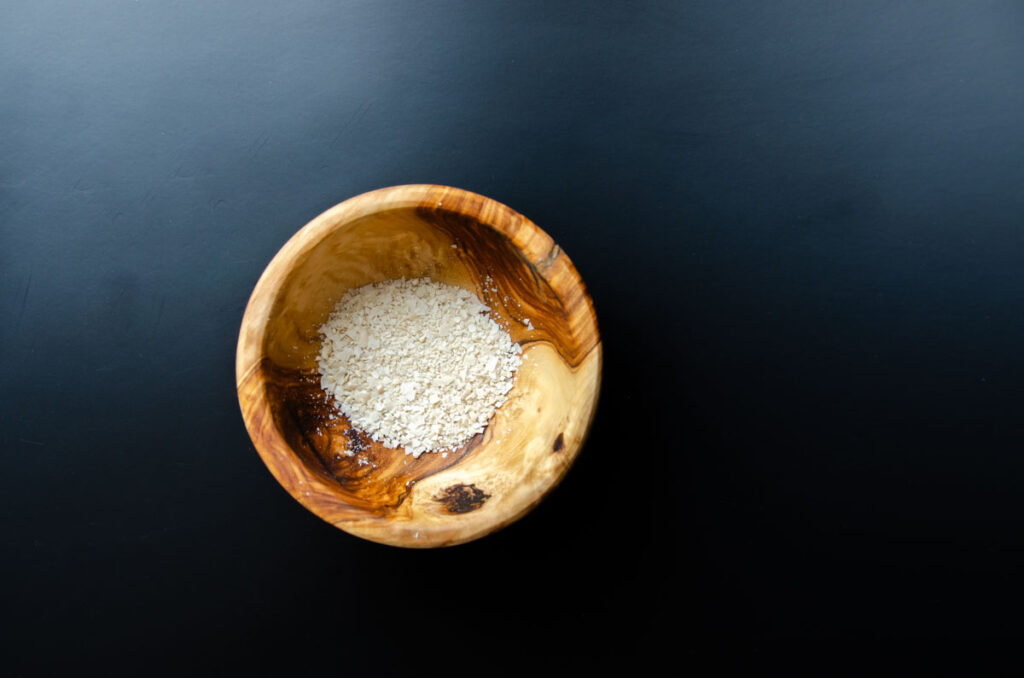
Equipment Needed To Dry Sourdough Starter
- Silicone mat or
- Parchment paper
- Offset spatula
- Airtight container
- Oxygen absorber (optional)
How To Dehydrate Sourdough Starter
Feed the sourdough starter equal parts warm water and flour and allow it to rise to its peak.
While you wait for it to rise, prep a flat surface, like a baking sheet or cutting board, with a piece of parchment paper or a silicone mat.
Once the sourdough starter is at its peak, pour the active sourdough starter on the parchment paper and spread it in a very thin layer with an offset spatula or the back of a spoon.
Let the starter sit undisturbed for 1-2 days in a warm spot. After the first 12 hours, you’ll notice the edges start to dry first and slowly dry from the edges inward.
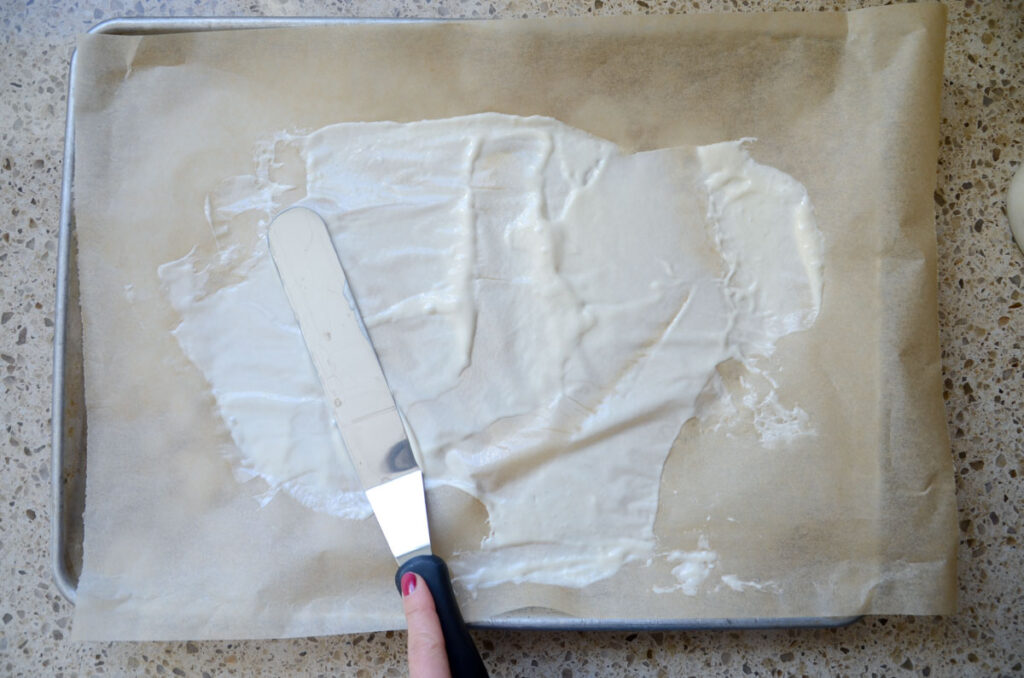
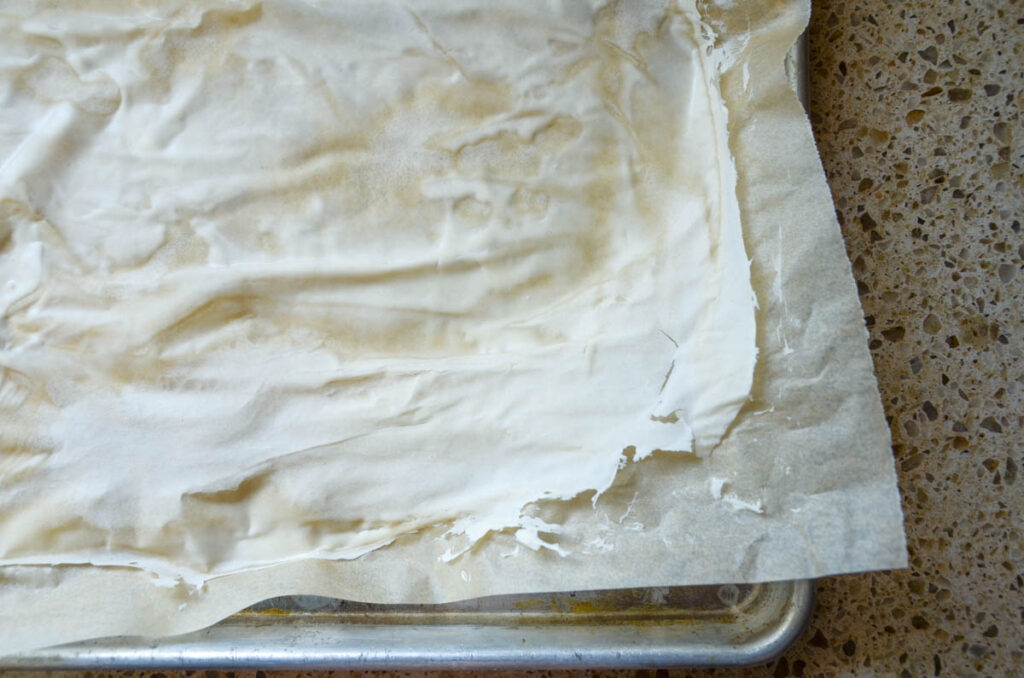
When the sourdough starter is completely dry, break it up and place the flakes into an airtight container.
FAQs
How Do I Know When The Sourdough Starter Is Completely Dry?
Before you place any dried sourdough starter in an airtight container, you must make sure that all of the moisture is removed. If there is any moisture left, it will give an opportunity for mold to grow.
You know when the starter is dry by how it looks and feels. The starter should be light and flaky, bone dry, and easily snap when you break a piece off. If there is any flex to the starter without breaking, it’s not completely dry yet and needs more time to dry.
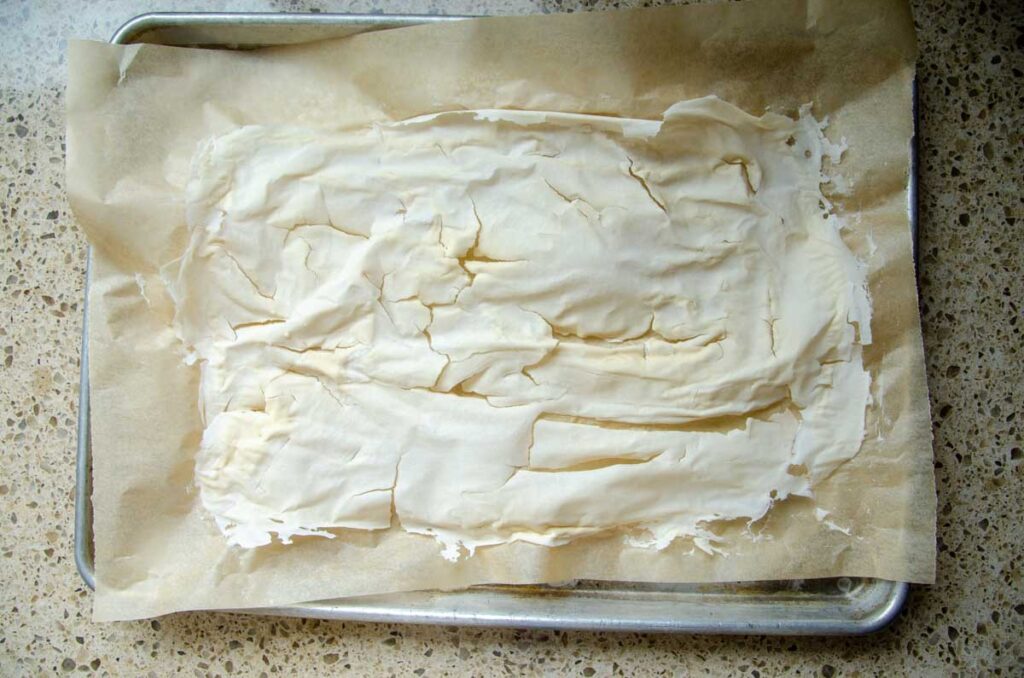
How Do I Store Dehydrated Sourdough Starter?
You have successfully dehydrated some sourdough storage, now what do you do with it?
There are two methods of storage. First, break apart the dried starter into small pieces and place them in a container. This option requires a larger container and takes up more storage space.
The other option is to create a powder from the sourdough starter. Simply grind the large flakes into a powder using a high-powered blender or food processor. The powder form takes up very little space.
Place the dry starter in a clean, airtight container, such as a glass jar or mason jar. I like to add a moisture absorber in the jar to add protection against moisture for long term storage. Place the jar in a cool dry place. It should store indefinitely.
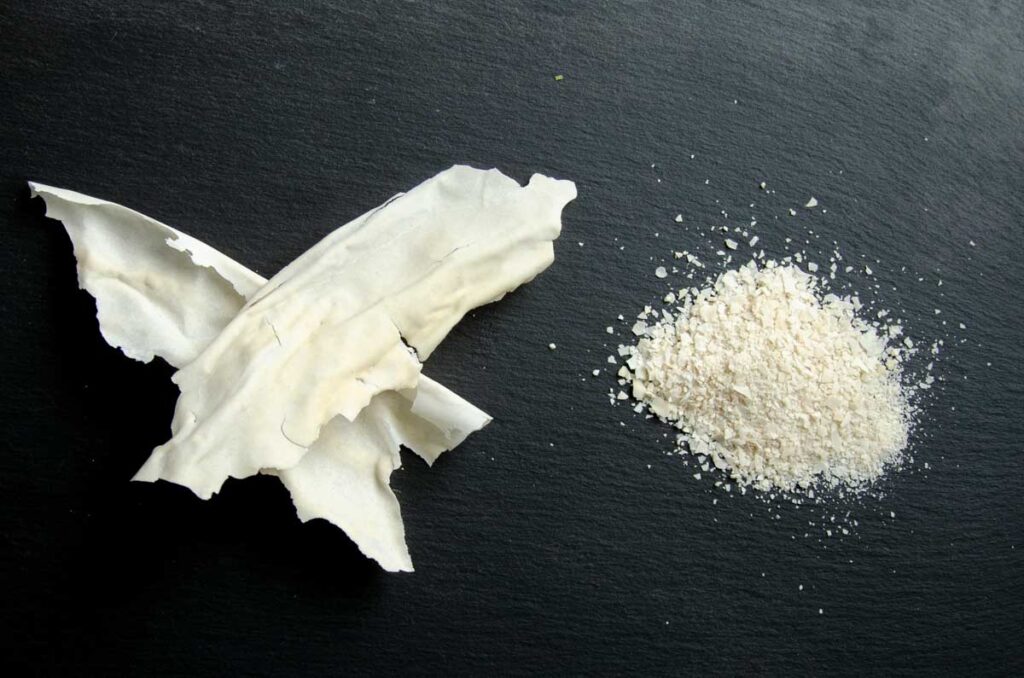
How Long Does A Dried Sourdough Starter Keep?
Theoretically, a dried sourdough starter should keep indefinitely as long as no moisture reaches the starter. Since I’ve not been around to personally test that claim, I can’t say for sure. However, I’ve kept a dried sourdough starter for years and successfully revived it.
How Long Is The Drying Process?
Unfortunately, there is no one straight answer to this question. With so many factors such as the air temperature, what method of dehydration you choose, how thin you spread the starter, and how humid the space is.
I dried my starter in the middle of winter and spread it really thin. After 4 hours, the edges were dry and curled up, with some thicker portions in the middle still wet-looking. The entire pan of starter was dry within 24 hours.
Different Methods To Dehydrate A Sourdough Starter
There are multiple methods to dehydrate your sourdough starter. As with anything, there are pros and cons to each. I’ll outline each option and state what I’ve discovered.
Dehydrating Sourdough Starter In An Oven
Ovens are a great way to dehydrate foods since, generally, we all have access to one. As the food heats, the water content slowly evaporates, leaving behind a dried food product. It’s a practical way to dehydrate food without investing in another product. I used my oven for years to dehydrate cherry tomatoes annually before I purchased a dehydrator.
But dehydrating a sourdough starter comes with certain restrictions. Mainly, exposing the starter for long periods above 120°F/50°C is too hot and will kill the wild yeast.
The lowest temperature most ovens reach is 170°F/77°C, which is still too high for the yeast to stay alive. Some ovens have a convection mode without additional heat so you get the air movement without a high temperature that could kill the yeast and bacteria.
My oven doesn’t have this feature, but yours might and be worth trying. (I would test this feature by taking the oven temperature without the starter in the oven. Or I’d dehydrate part of the starter and then rehydrate it to be sure you didn’t bake the starter.)
Dehydrating Sourdough Starter Without A Dehydrator
The best method to dehydrate a sourdough starter if you don’t own a dehydrator is to let it sit out at ambient temperature. What you make up in not needing any special equipment, you give up in time as this method takes the longest. Even though this option is the longest, it’s still not long and is the method I’d recommend.
To speed things up, you could place the sourdough starter in front of a fan with the setting on low. Just be sure to weigh down the parchment paper so it doesn’t blow away.
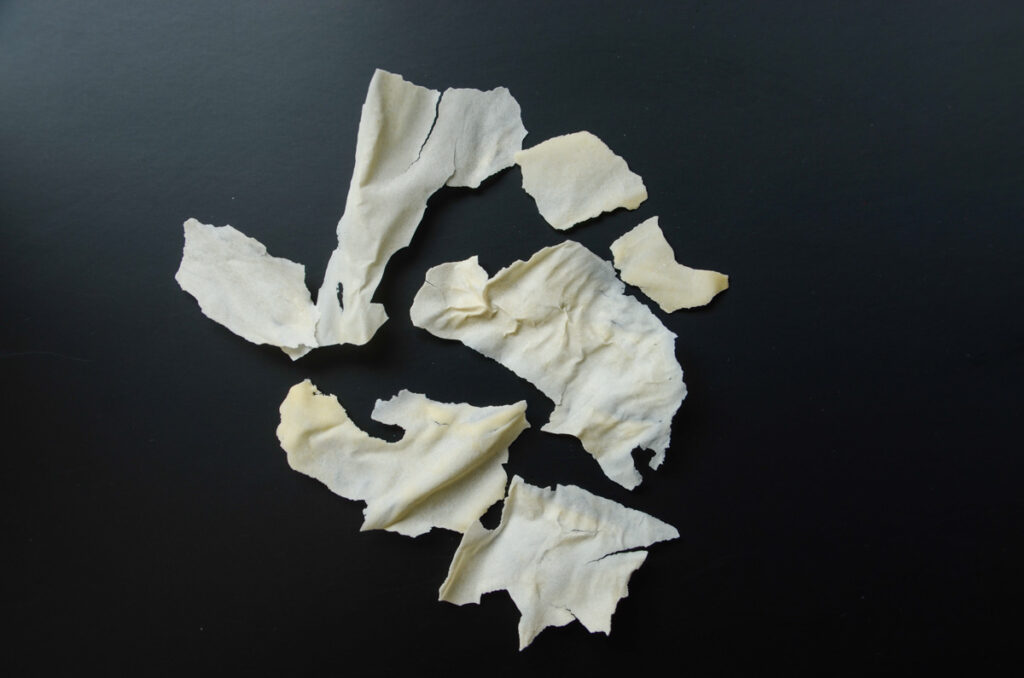
Dehydrating Sourdough Starter With An Air Fryer
Alternatively, some air fryers have a dehydrating function. While this might be an excellent option for fruits and vegetables that don’t have any temperature restriction when dehydrating, air fryers still operate too hot for the temperature-sensitive sourdough starter.
Dehydrating Starter In A Dehydrator
This option is probably the most straightforward. After all, this is what dehydrators are made to do. The downside is that you need a dehydrator, which can range from very basic to the top of the line.
Spread roughly 1/4 cup to 1/2 of sourdough starter thinly onto a piece of parchment paper or a dehydrator silicone mat and place on the dehydrator tray. Dehydrate at 90°F/32°C for 3-4 hours. Check that the starter is completely dry before placing it into a container for storage.
Tips
- Use a mature, healthy sourdough starter for the best results. A new starter lacks the diverse bacteria and yeast to withstand the drying process and has a lower chance of surviving.
- Dehydrating a starter at peak activity ensures that there are plenty of healthy yeast and bacteria in the starter.
- If you’re not using an additional heat source to dehydrate your sourdough starter, choose a dry time of the year that’s not too humid.
- Set something on the edge of the parchment paper to weigh it down so it doesn’t blow away.

